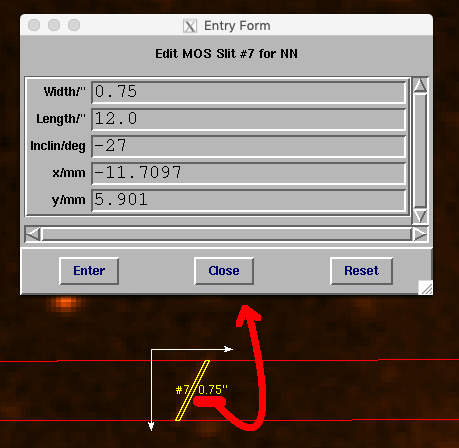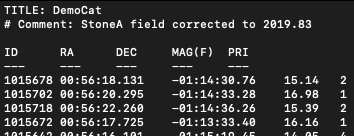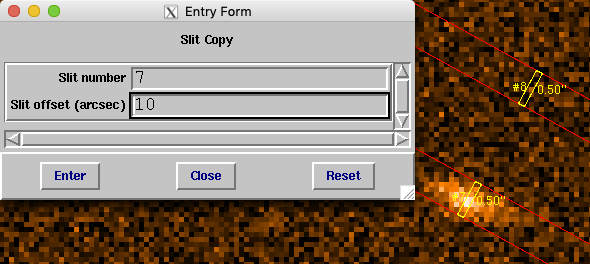LMS Position Slits
Defining Slit Characteristics
The Slit Characteristics are all defined in the “Mask Config / Layout” menu.
From here you can select the Type of Slit (Straight, Circle, Curved), dimensions, some standard display and configurations options.
There are 3 slit type options: Straight (which includes parallelogram/tilted slits), Circular slits, and Curved Slits. Laser limitations and maintaining mask integrity limit the spacing and minimum cut width of slits.
Minimum Cut Width: 0.08mm (0.13″)
Minimum Spacing: 1.8mm (3″)
About Straight/Tilted Slits:
Straight slits can be placed using Center Slit, Auto-Slit, or clicking in place, defining the slit width and slit length from the menus. The slit length and width can be edited from the slit parameters popup brought up for each individual slit. This popup also allows the user to adjust the inclination (tilt) of the slit. The spectral width and spacial length will be maintained as users adjust the tilt.
About Circular Slits:
The diameter of circular slits is defined by the width in the menu. Circular slits can be placed using Center Slit, Auto-Slit, or clicking in place, defining the diameter by setting the width though the menu. The diameter can be edited from the slit parameters popup brought up for each individual slit.
About curved slits:
Auto-Slit
In detailed discussion of Local Catalog Format can be found in the ESO Astronomical Catalog Library User Manual.
The format of Local Catalogs is a simple ASCII tab table. The line containing ID, RA, DEC, … specifies the header of each column. The keywords have to be tab separated. LMS requires an ID, RA, and DEC column, and for optimal performance the user should include a PRIORITY column as well. Lines starting with ‘#’ are considered as comments and are ignored.
To load a Local Catalog, hit Ctrl-O to bring the File Dialog Box, or maneuver the “Data Servers” menu. Auto-Slit item from the LUCIFER menu automatically places slits on the sources listed in the catalog. The slits are placed first in order of priority and then in order as they appear in the catalog.
They will be placed in a region 2.8′ wide and just shy of 4′ long (allowing for alignment holes at the top). The horizontal restriction in the FoV to 2.8’ is because the slit masks are held in a cylindrical shape to follow the curved telescope focal surface along the Y direction. As you move off the center of the field in X, the slitlets on a MOS mask become increasingly out of focus with respect to both the telescope (giving higher slit losses) and the instrument (decreasing the effective resolution).
Slit Constraints:
- Auto slit is not functional with the curved slits
- Slits must remain in the FOV
- No overlapping slits
Center Slit
This can be used to individually place slits on an image with an updated/calibrated WCS. The center slit option will significantly improve the slit positions for point sources and other relatively compact targets.
Toggle the “Center Slit” which opens the Pick Object window known from the Alignment target and Guide tar selection. Click somewhere with the left mouse button, hold the button while moving the mouse, wait until you see the target in the center of the Pick Object window and release the mouse button now. Centering may not be possible if the object extends beyond the Pick Object window. In this case, reduce the zoom factor of this window until the source is fully inside the window.
Copy Slit
This can be used to generated identical slit pairs offset by some vertical offset. Selecting “Slit Copy” will open the Slit Copy Entry Form. Enter the Slit Number of the slit to be copied (type, properties, length, width), and the vertical offset relative to the input slit. Positive x will copy a slit x arc seconds above the original slit and negative will make a copy below.









